Showroom Interior Design in Bangladesh
Design 2morrow is the premier choice for commercial and showroom interior design due to its unwavering commitment to innovation, functionality, and aesthetic brilliance. With a dedicated team of creative minds, Design 2morrow blends modern trends with timeless elegance, ensuring each showroom becomes a captivating space that speaks to the brand’s essence.Our approach prioritizes not just visual appeal but also the practical aspects of showcasing products effectively. We understand that a well-designed showroom is more than a space; it’s an experience. Design 2morrow meticulously considers traffic flow, lighting, and spatial organization to create an environment that enhances the customer journey. Moreover, our designers stay at the forefront of industry trends, ensuring your showroom remains current and ahead of the curve. By choosing Design 2morrow, you’re investing in a transformative partnership beyond aesthetics, delivering results that elevate your brand and leave a lasting impression on every visitor.
Importance of Showroom Interior Design:
When it comes to attracting customers and making sales, the interior design of a showroom plays an indispensable role. A well-thought-out showroom design can significantly influence customer perception, engagement, and ultimately, purchase decisions. Just think about the last time you walked into a showroom – did the layout, ambiance, and lighting make you feel comfortable and welcomed? An effective showroom interior design does more than showcase products; it creates an immersive experience that captivates shoppers. Here are a few key factors illustrating its importance:
- First Impressions Matter: Customers often form an opinion about a brand within the first few seconds of entering a showroom. A stylish and cohesive design can leave a lasting impression.
- Guiding Customer Flow: A smartly designed showroom layout helps guide customers through different sections, enhancing their journey and interaction with products.
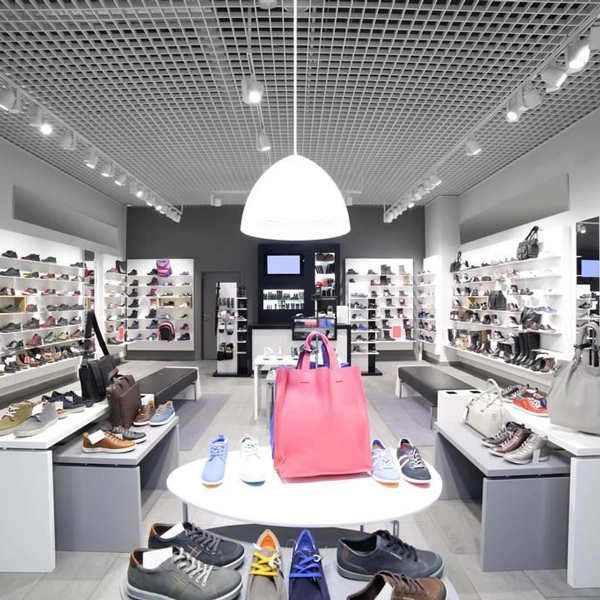
Brand Messaging: The design reflects the brand’s identity and ethos. Consistent themes promote brand recognition and loyalty. In a world saturated with options, the showroom’s interior acts as a differentiator. It provides an opportunity for brands to express their mission visually and to connect with customers on a personal level, making the shopping experience more enjoyable and memorable. Just like a great meal deserves an equally picturesque table setting, exceptional products need an environment that complements their appeal. Design 2 morrow also Served Some Following Service Interior Designs: You can review Interior Project Comparison between the current Design and an earlier or later Designs of the same project in a detailed report.
Doctors Chamber Design: Nowadays Visiting a doctor isn’t pleasant experience in Bangladesh. The situation becomes dire when you have to stop by a narrow and crowded space Now Doctors Chamber Interior Design Must Needy. A sick person nauseates more when the lousy clinic smell hits his nose. Besides, a poor atmosphere smashes the high hopes of a physician’s practice And Pharmacy Area Interior Design. So, doctor’s chamber design is critical to give your practice a lifeline. it needs Also Interior Design for Healthcare Center. Design 2morrow Have made a plan for Media Center Interior Design And rehabilitation center interior design in Bangladesh. Please Visit Our Branch or Call us at +8801720636060

Key Elements of Showroom Interior Design:-
- Layout and Space Planning
The layout and space planning of a showroom are foundational elements that directly impact customer experience. A thoughtfully designed space not only showcases products effectively but also creates a flow that encourages exploration. Imagine stepping into a showroom where every item feels accessible and each corner invites curiosity. Consider the following best practices for layout and space planning:
- Zoning: Divide the showroom into distinct zones, such as display areas, information counters, and lounge spaces. This organization enables customers to find what they’re looking for with ease.
- Traffic Flow: Design pathways that naturally guide visitors through the space. Remember, an open layout can promote a sense of freedom, while strategically placed barriers can create intimate nooks for product exploration.
- Lighting and Color Schemes
Once the layout is set, it’s time to think about lighting and color schemes. These elements significantly influence mood and can enhance the appeal of displayed products. Lighting: Utilize a combination of ambient, task, and accent lighting to create a balanced environment. Spotlighting specific products can draw attention, while softer lighting can make the space feel warm and inviting. Color Schemes: Choose colors that align with your brand identity. For instance, bright, vibrant colors can energize a space, whereas softer pastels may evoke feelings of calm. A personal example: I once visited a tech showroom painted in sleek metallic tones, complemented by bright LED lights. The effect was striking, and I found myself lingering longer than expected. That’s the secret power of effective lighting and color in showroom design!
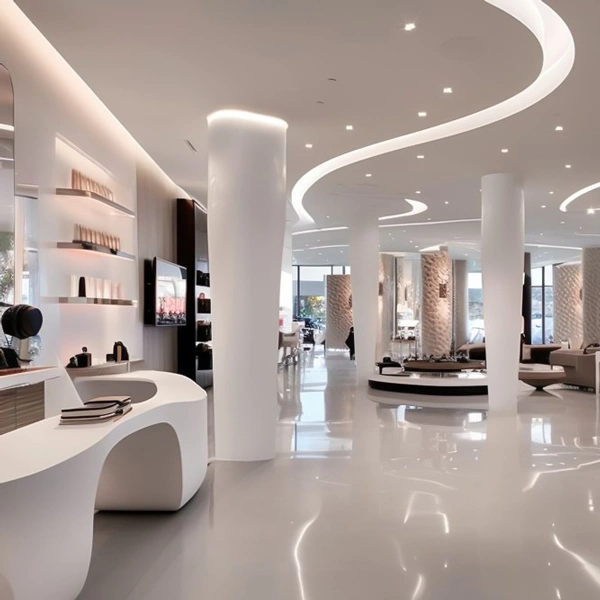
Furniture Selection and Placement
- Display Shelving and Racks
Diving deeper into showroom interior design, furniture selection and placement are key to creating a functional and inviting environment. Display shelving and racks are particularly vital because they form the backbone of how products are showcased. Consider investing in versatile shelving units that not only fit your brand aesthetic but also maximize visibility.
- Height Variety: Utilize a mix of tall and low shelves to create visual interest and encourage customers to explore different levels.
- Materials Matter: Choose materials that align with your products. For example, wooden racks can communicate warmth, while sleek metal shelves can present a modern vibe.
Think of it this way: I once visited a home goods store where the creative use of floating shelves allowed for both display and accessibility, making it easy to browse without feeling crowded.
- Seating Areas
Now, let’s talk about seating areas, another essential component that enhances customer comfort and encourages longer visits. A well-placed seating area can transform a showroom from merely a transactional space to a welcoming environment.
- Strategic Placement: Position seating near high-interest displays or interactive zones. This invites customers to pause, engage, and discuss products.
- Comfort First: Invest in comfortable seating—think plush chairs or stylish benches. This not only enhances the customer’s experience but can also instigate conversations about the displayed items.
One memorable showroom I visited featured cozy lounge chairs surrounded by product displays, creating an inviting atmosphere that encouraged social interaction. Such thoughtful layouts can, indeed, make a remarkable difference in how customers perceive the brand.
Flooring and Wall Treatments:
Types of Flooring Materials:
As we move forward in the conversation about showroom interior design, it’s essential to consider flooring and wall treatments—two elements that significantly influence the overall aesthetic and functionality of the space. Starting with flooring, the right material can enhance the showroom’s atmosphere while also providing practical benefits.
- Hardwood Flooring: This classic choice adds warmth and elegance to any space. Its timeless appeal makes it easy to pair with various decor styles.
- Vinyl or Laminate: These options are budget-friendly and available in a multitude of designs that can mimic natural materials. They are also easy to clean and maintain.
- Carpeting: Soft carpets can enhance comfort and sound absorption, creating a cozy atmosphere, especially in showrooms focused on home goods or lifestyle products.
I remember visiting a flooring showroom where the use of different samples on the floor allowed customers to visualize how products could fit into their homes.
Wall Art and Decor
Now, let’s talk about wall treatments, particularly wall art and decor. Walls offer a blank canvas for enhancing the showroom’s personality and engaging customers.
- Branding Elements: Incorporate logos or brand colors in wall art to reinforce identity. This consistency strengthens brand recognition.
- Artistic Displays: Consider offering local artwork or thematic displays that resonate with the showroom’s products. It adds a unique touch and supports community artists.
During one of my visits to a contemporary art gallery-turned-showroom, I was captivated by the way bold, large-scale art pieces were paired with the product displays. This integration not only beautified the space but also initiated conversations among visitors, turning casual shoppers into engaged customers. Thoughtful flooring and wall treatments truly create a memorable atmosphere!
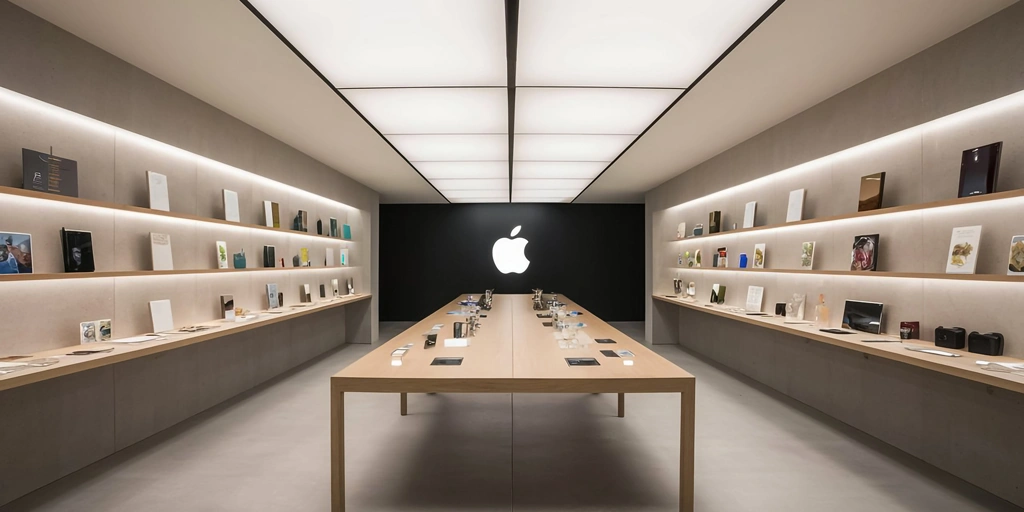
Technology Integration in Showroom Design
- Interactive Displays
Shifting gears to a more modern aspect of showroom interior design, technology integration can elevate the customer experience significantly. One of the most impactful ways to do this is through interactive displays. Imagine walking into a showroom where you can engage with the products in a hands-on manner.
- Touchscreens: These can provide information, product videos, or even 3D visualizations, allowing customers to explore offerings at their own pace.
- Virtual Reality: VR technology can transport customers into a simulated environment where they can experience products in a real-world context, perhaps visualizing furniture in their own home.
I once encountered a furniture showroom that featured VR headsets, allowing customers to see how their chosen pieces would look in different settings. It not only sparked excitement but also made decision-making easier.
- Digital Signage or TV Solutions
Alongside interactive displays, digital signage or TV solutions are transforming how showrooms communicate information to customers.
- Dynamic Content: Digital signs can showcase promotions, new arrivals, or event information in real-time, keeping the content fresh and relevant.
- Engagement Opportunities: Use digital signage to create engaging displays that draw customers in. For example, a touch-activated screen could display additional product information or related items.
During a recent visit to a tech store, I noticed an engaging digital sign that highlighted special offers in a visually striking way. The combination of movement, color, and information caught my eye immediately, demonstrating how effective these solutions can be in enticing customers. Integrating technology not only enhances aesthetics but also enriches the shopping experience!
Accessories and Decorative Accents:
- Plants and Greenery
As we continue exploring the key aspects of showroom interior design, accessories and decorative accents play a pivotal role in enhancing the overall ambiance and customer experience. One of the most impactful elements is the use of plants and greenery.
- Natural Elements: Incorporating plants introduces a breath of fresh air, literally and figuratively. They can soften hard surfaces and create a calming atmosphere.
- Variety Options: Consider a mix of tall plants, hanging greenery, and decorative succulents to add dimension. Each type can bring a different feel to the space.
In a recent visit to a home decor showroom, I was struck by how the use of large potted plants invited visitors to explore different sections. It not only beautified the space but made it feel more organic and welcoming.
- Rugs and Textiles
The next accessory to consider is rugs and textiles. These elements add warmth, comfort, and cohesion to a showroom environment.
- Area Rugs: Strategically placing area rugs can define specific zones, such as seating areas or product displays. They also enhance acoustics, making for a more pleasant shopping experience.
- Textile Variety: Incorporating various fabrics—like throws, cushions, or curtains—can add layers of texture and color, making the space feel inviting.
I recall walking into a clothing showroom where the rich, textured rugs created a cozy backdrop for the clothing displays. This not only made the space visually appealing but also encouraged customers to linger longer, captivated by the overall comfort of the environment. By thoughtfully integrating plants and textiles, showrooms can create immersive spaces that resonate with customers on a deeper level.
Budgeting and Cost Considerations:

- Setting a Realistic Budget
As we delve into the practical aspects of showroom interior design, budgeting and cost considerations become crucial in transforming a vision into reality. Setting a realistic budget is the first step toward achieving your design goals without breaking the bank.
- Assess Overall Costs: Begin by outlining all potential costs, including furnishings, decor, flooring, and lighting. Don’t forget to factor in expenses for installation and labor.
- Prioritize Needs vs. Wants: Identify must-have items that will significantly impact customer experience versus optional enhancements. This will help you allocate funds where they matter most.
When I helped design a boutique showroom, we laid out a detailed budget, which allowed us to allocate funds for essential elements while leaving some room for decor that could be added later.
- Cost-saving Strategies
Once a budget is established, exploring cost-saving strategies becomes essential. Maximizing your resources while maintaining design quality can lead to impressive results without overspending.
- Repurpose & Reuse: Consider repurposing furniture or decor from other retail spaces or even personal collections that align with your brand style.
- DIY Elements: Incorporating do-it-yourself projects for smaller decor items can save costs while providing a personal touch. Think creatively about how you can enhance the space without hiring contractors for every detail.
In one project, we painted and refurbished some existing shelving instead of buying new pieces, instantly transforming the look of our showroom at a fraction of the cost. By carefully setting a realistic budget and implementing smart cost-saving strategies, you can create an attractive and functional showroom that beautifully fits within your financial parameters.
Creating an Engaging Customer Experience:
- Creating Focal Points
In the quest to design a captivating showroom, creating engaging customer experiences should be a top priority. One of the most effective ways to do this is by establishing focal points throughout the space. These focal points draw visitors in and guide their attention to essential elements.
- Highlight Key Products: Position high-demand or new items in prominent places to catch customers’ eyes. Using stylish displays or unique fixtures can enhance their appeal.
- Visual Interest: Incorporate striking art pieces or thematic decor to create areas that encourage exploration and photo opportunities. Think of it as your showroom’s version of a selfie spot!
During my last trip to a trendy home showroom, I noticed a beautifully arranged living space in the center, making it impossible to walk by without stopping to take a closer look. This clever design element not only showcased their furniture but also encouraged customers to envision how these items could fit into their own homes.
- Incorporating Brand Identity
Alongside focal points, incorporating brand identity is crucial to creating a memorable environment. The showroom should reflect the essence of the brand in every detail.
- Consistent Aesthetics: Use colors, materials, and design elements that align with your brand’s image. This reinforces recognition and creates a cohesive experience.
- Storytelling: Allow the layout and decor to tell a story about the brand’s values, mission, and vision. This connection can foster emotional engagement with customers.
In a recent visit to a lifestyle brand showroom, I felt the brand’s ethos through every element, from the recycled materials used in displays to the Eco-friendly products showcased. It created a powerful narrative that resonated deeply with me and many other visitors. By focusing on focal points and brand identity, showrooms can create an engaging atmosphere that elevates the customer experience to new heights.
Trends in Showroom Interior Design:
As we explore the latest trends in showroom interior design, sustainability stands out as a defining characteristic of modern spaces. Consumers today are increasingly conscious of their impact on the environment, prompting showrooms to adopt sustainable design practices that resonate with eco-friendly values.
- Eco-friendly Materials: Utilizing reclaimed or responsibly sourced materials can enhance the showroom’s aesthetic while promoting sustainability. Think bamboo flooring or recycled metals for displays.
- Energy-efficient Lighting: Integrating LED lighting not only reduces energy consumption but also brings a vibrant ambiance to the space.
I once visited a sustainable home goods showroom that cleverly showcased recycled materials in its displays, effectively communicating the brand’s commitment to the environment while delighting customers visually.
Minimalist and Scandinavian Influences
Alongside sustainability, minimalist and Scandinavian design influences continue to shape showroom interiors. This aesthetic emphasizes simplicity and functionality, resulting in clean lines and uncluttered spaces.
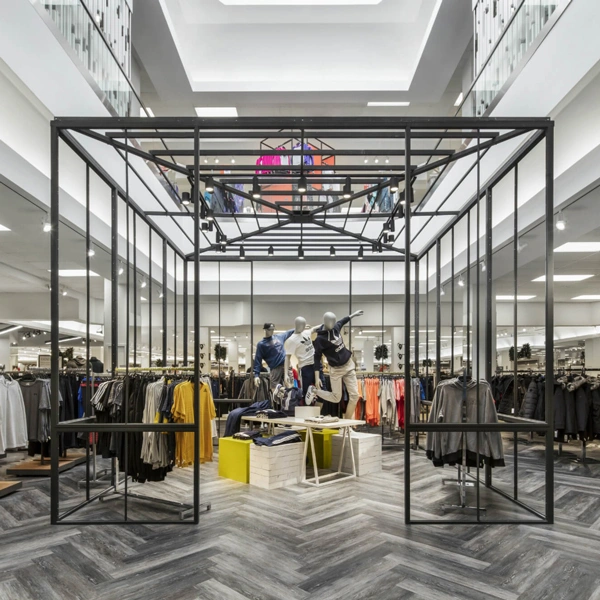
- Open Spaces: These designs often feature open layouts, allowing natural light to fill the area and enhancing the customer experience.
- Neutral Color Palettes: Soft, neutral tones are commonly adopted, creating a serene environment that puts the focus on the products themselves.
In a recent trip to a Scandinavian furniture showroom, I was captivated by the effortlessly minimalistic approach that highlighted the beauty of each piece. The uncluttered design made it easy to appreciate the craftsmanship without distractions. By embracing sustainable practices and minimalist aesthetics, showrooms can create spaces that reflect current values while inviting customers to linger and explore.
Services Included in Our Showroom Interior Design
Design 2morrow provides a comprehensive list of services with each interior design service. These services include:
- Space Planning: We expertly arrange your showroom layout for optimal functionality and a seamless flow that enhances the overall customer experience.
- Customized Furnishings: Our team crafts bespoke furniture solutions tailored to your brand, ensuring a unique and cohesive aesthetic that aligns with your vision.
- Lighting Design: We strategically design lighting schemes to highlight your products, create ambiance, and showcase your showroom in the best possible light.
- Color Palette Selection: We assist in choosing a harmonious color palette that reflects your brand identity and creates a visually appealing and inviting atmosphere.
- Branding Integration: We seamlessly integrate your brand identity into the design, ensuring that your showroom becomes a cohesive representation of your products and values.
Showroom Interior Design Image Gallery
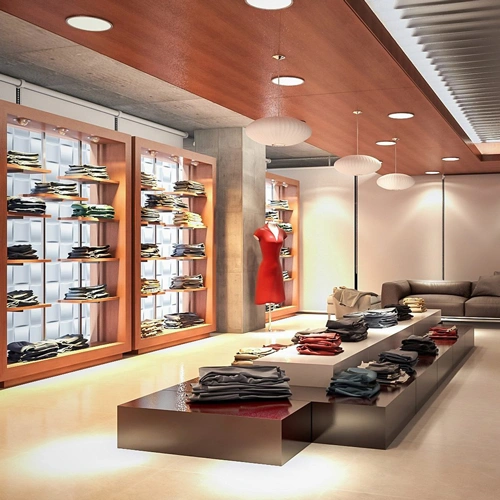
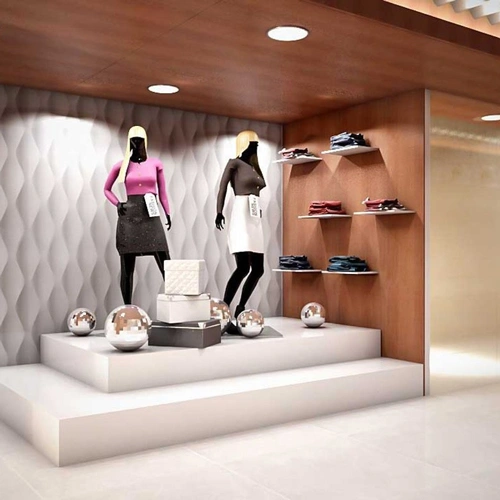
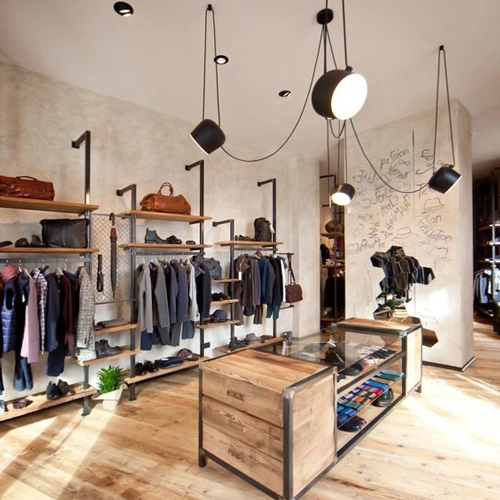
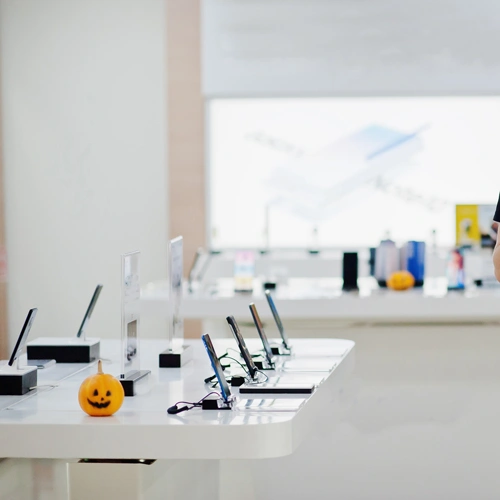

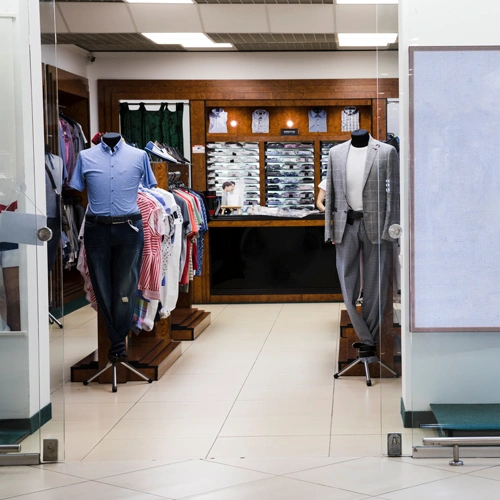
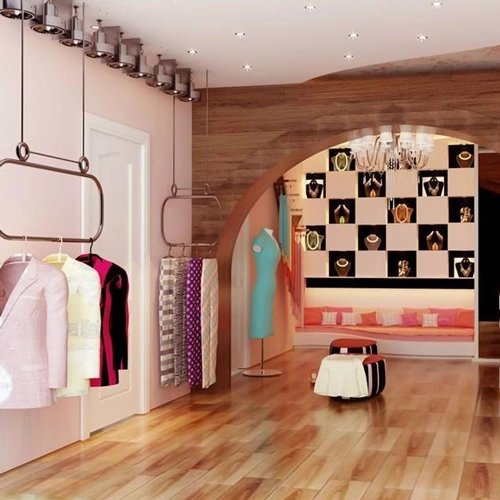
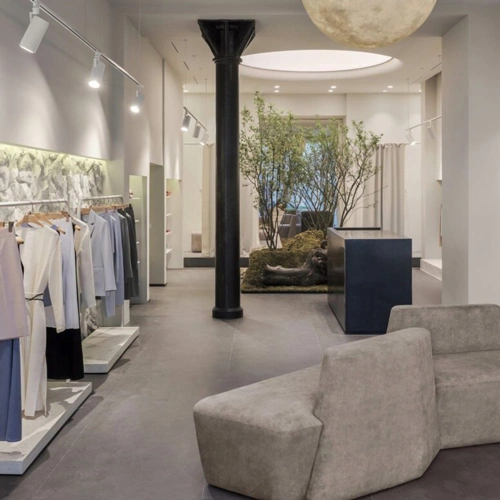
Benefits of Getting the Best Showroom Interior Design
Design 2morrow is one of Bangladesh’s leading commercial interior design firms, ensuring our clients get the best service possible. As such, we provide them with numerous benefits, such as:
- Enhanced Customer Experience: A well-designed showroom creates a positive and memorable experience for your customers, making them likely to engage with your products and return in the future.
- Increased Sales: The best showroom interior design highlights and showcases products effectively, influencing purchasing decisions and boosting sales.
- Brand Image Improvement: A thoughtfully designed showroom reinforces your brand identity, conveying professionalism, style, and attention to detail, enhancing your overall brand image.
- Optimized Space Utilization: The best showroom designs maximize the use of space, ensuring that every corner has a purpose and contributes to an organized and visually appealing environment.
- Competitive Edge: Make a stand in the market by having the best showroom interior design. It sets you apart from competitors, attracting more customers and positioning your business as a leader in the industry.
FAQ: Showroom Interior Design
-
What is showroom interior design?Showroom interior design involves the strategic planning and styling of a retail space to enhance product display, customer experience, and brand identity. It focuses on aesthetics, functionality, and creating an inviting atmosphere that drives sales.
-
Why is showroom interior design important?Effective showroom design is crucial because:
• First Impressions Matter: It shapes customers' initial thoughts about your brand.
• Product Highlighting: A well-designed space emphasizes key products.
• Customer Experience: It influences how customers navigate and interact with the space, improving their overall shopping experience.
• Sales Boost An appealing environment can lead to increased foot traffic and higher sales conversions. -
What are the key elements of showroom design?Some essential elements include:
Element Description Layout Defines traffic flow and product visibility. Lighting Enhances aesthetics and highlights products effectively. Color Scheme Influences emotions and brand perception. Furniture & Fixtures Should be functional and complement the space's theme. Branding Incorporates logos and brand colors to reinforce identity.
-
How do I choose the right layout for my showroom?When choosing a layout, consider:
• Product Types: The nature of your products will dictate the layout.
• Customer Journey: Map out how you want customers to navigate through the space.
• Space Constraints: Utilize available space wisely to maximize product visibility.
• Flexibility opt for layouts that allow for reconfiguration as needed. -
How can lighting affect showroom design?Lighting plays a vital role by:
• Setting the Mood: It creates an ambiance that aligns with your brand.
• Highlighting Products: Properly positioned lights can draw attention to specific items.
• Improving Visibility: Good lighting ensures that customers can clearly see and appreciate your products. -
How much does it cost to design a showroom?Costs can vary widely based on factors such as:
• Size of the Showroom
• Complexity of Design
• Materials Used
• Location
It's advisable to set a budget and consult with a designer to get a more accurate estimate tailored to your needs. Our Cost May Start BDT 600 to BDT 3000 Per Square feet or more.
Design 2morrow
Typically replies within minutes
আসসালামু আলাইকুম,
আপনার প্রয়োজণীয় তথ্য জানার জন্য ফোন করুন,
☎️ +8801870720555, অথবা- ভিজিট করুন আমাদের ওয়েবসাইট-
🌍 www.design2morrow.com
ধন্যবাদ
Design 2morrow | Interior Design Company
Showroom Interior Design?
WhatsApp Us
🟢 Online | Privacy policy
WhatsApp us
